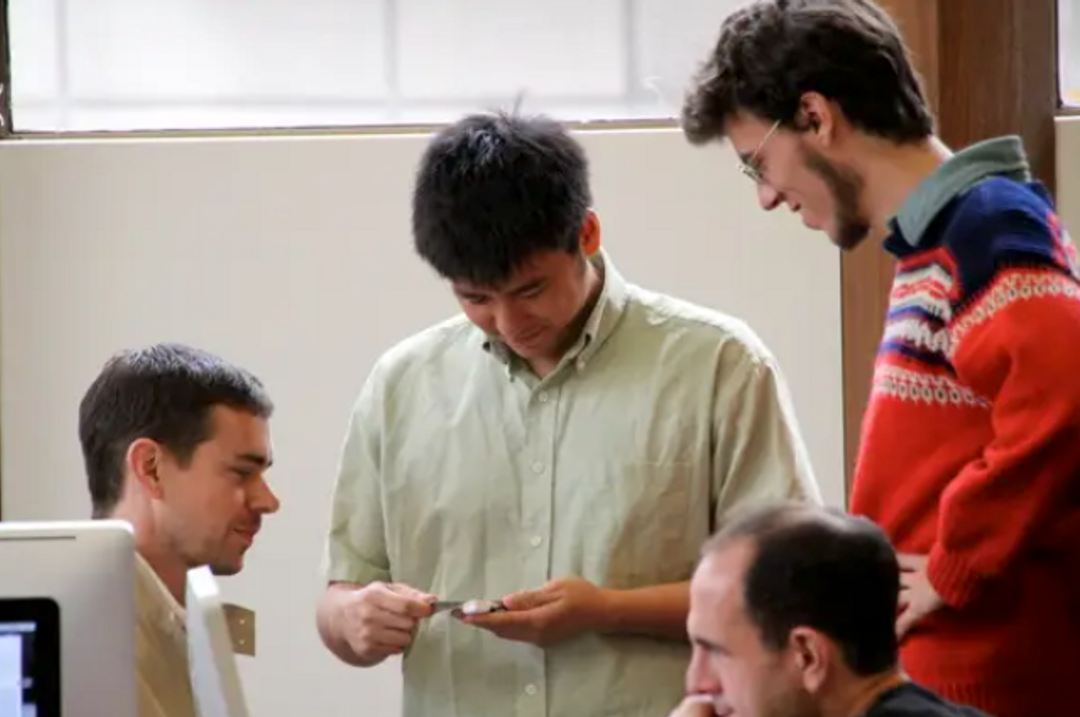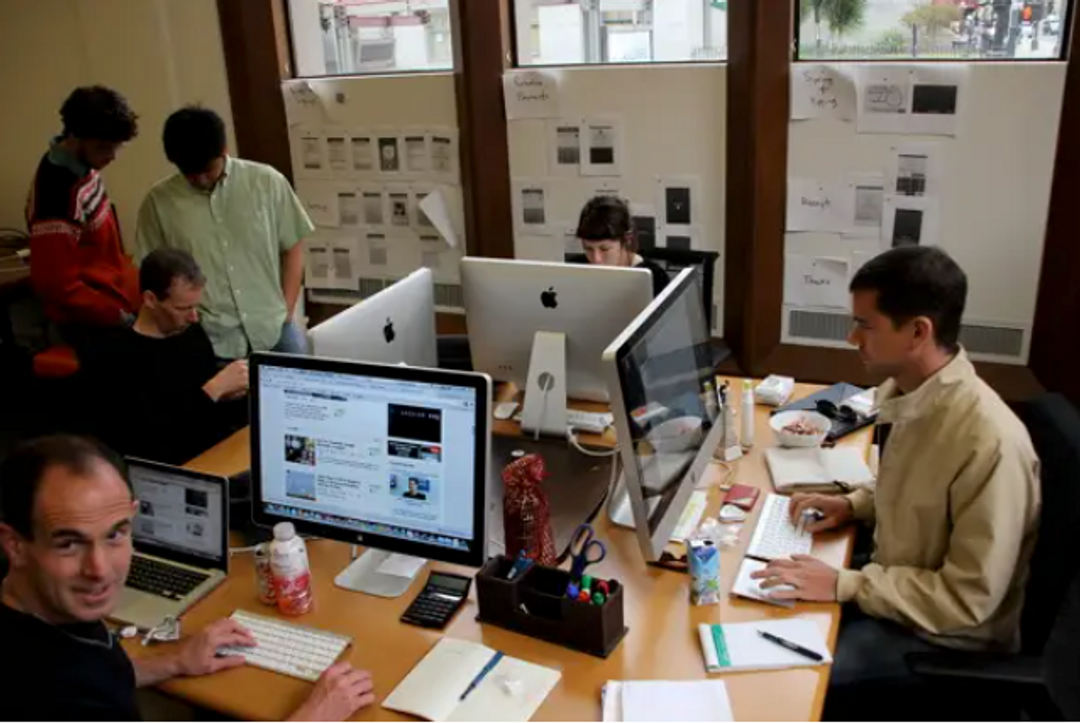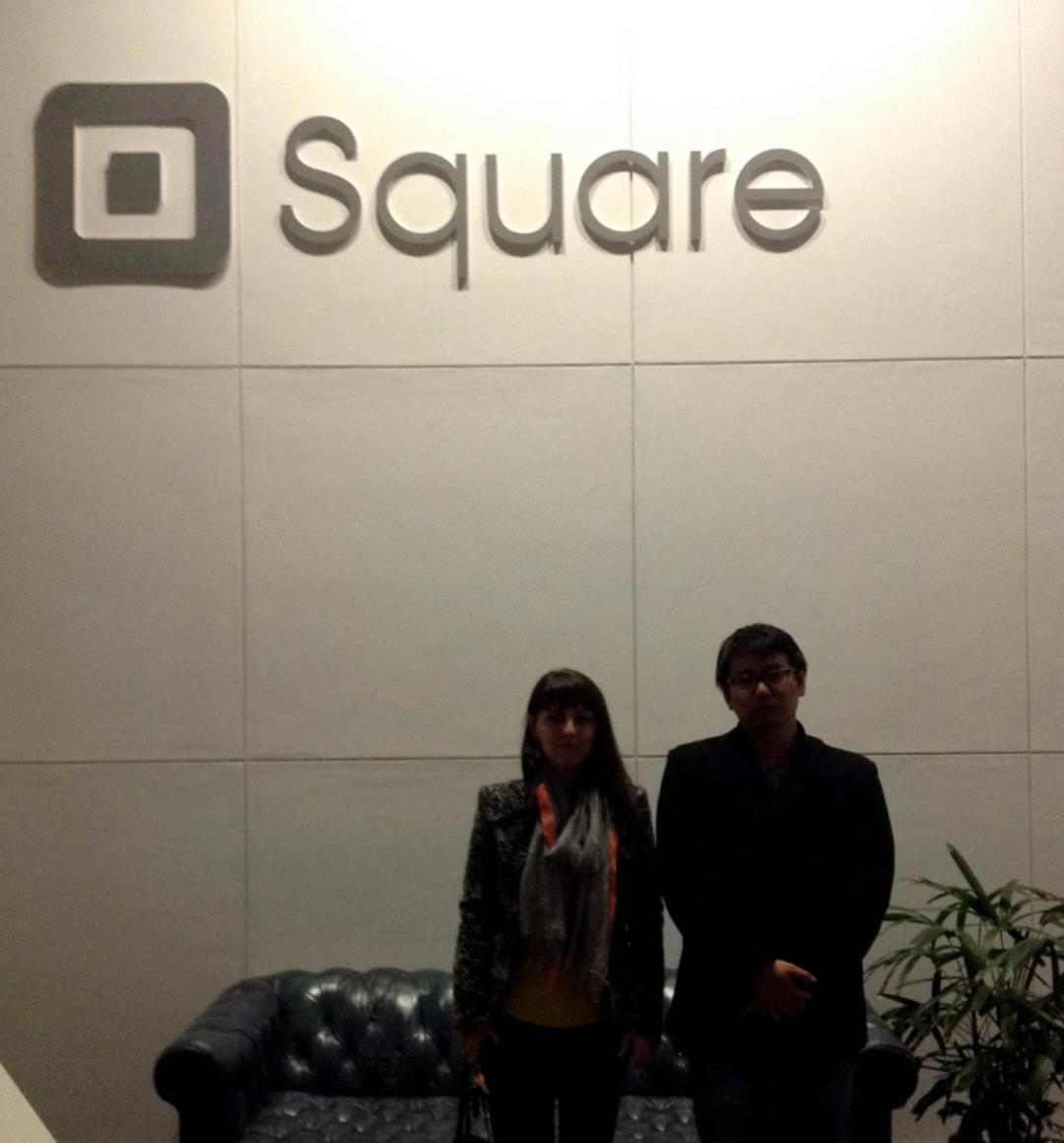Meet Sam Wen
Engineer and Entrepreneur
Sam Wen is an engineer and entrepreneur turned investor. After studying electrical engineering in college, he co-founded Block (formerly known as Square), where he built apps, hardware, and infrastructure to empower commerce. Today, he is a venture partner at Green Visor Capital, a venture capital firm that invests in financial technology companies at early stages.
STEM to the Sky
Feb 16, 2022
- When did you start to develop your interest in STEM?
- How did you end up in the business world?
- What is the backstory behind Square, and how did your role there change over time?
- How would you describe working at a startup?
- What is Green Visor Capital, and what is your role there as a venture partner?
- How would you compare working in tech to working in business?
- What skills are important for an investing role like yours?
- Why do you love working in STEM?
When did you start to develop your interest in STEM?
My interest in STEM started with my love for video games. In middle school, I discovered this tank video game in the computer lab of a university that my mom worked at. Later on, I saw people playing the original Doom, which looked like fun. My family wasn’t well off enough to afford a computer for a long time, and when we did, we couldn’t afford to buy video games. Windows QBasic was my first programming language. When I started going to STEM Magnet programs that were focused on math, science, and computer science, I was introduced to other languages like TrueBASIC and Java.

(Credit: Sam Wen)
How did you end up in the business world?
With my career goals, my initial intention was to make my way back to video games. Where I grew up in Maryland, there were a lot of opportunities in the government labs where you could become an intern. In 10th grade, I started a research program called SEAP, which is a science and engineering apprenticeship program that partners with labs in the area. My first apprenticeship was at the Army Research Lab, which I attended every summer, even through college. After I graduated, I decided to take my experience in defense and apply to defense contractors. I started my career at Raytheon, which was close to home. There, I worked on drones, most of which are classified. I eventually moved to St. Louis where I accepted a job at Boeing working on bombs and other defense systems.
While I was at Boeing, I had to go do something really dangerous, and then I decided it might be time to have a career switch. I started in graduate school. There, a professor recommended me to work on a company with some of his friends, which began my involvement with Square (now known as Block), a payments company. The company started off by developing a device that can be inserted into the headphone jack of your phone, which accepts credit cards for payment. The idea was to allow anybody to accept credit cards as a core part of their business. Being able to accept any payment method helps all companies grow their revenue and grow their businesses, which was the vision. When it became clear that this was going to become a real business, I left my job at Boeing and moved to San Francisco.
I’ve been in the startup ecosystem ever since. I love working in small teams that accomplish so much and doing things that directly affect customers.
What is the backstory behind Square, and how did your role there change over time?
The idea of Square came from a friend of my professor, Jim McKelvey. He’s a tech entrepreneur in every sense of the word and owns his own glassblowing studio. His idea for Square came from a problem that he had with his business. He noticed that during the business’s lifetime, there were multiple instances where he wasn’t able to complete a sale because people tend to not carry $2,000 in cash. Checks were also avoided due to the risks that a check entails. Credit cards and debit cards are great for these larger purchases, but he wasn’t able to accept them. For this reason, he lost a number of sales, which is quite consequential for small businesses. The intention behind Square was to address this one problem: how can we enable all forms of payment to be viable when you go out and buy something? A very simple idea was to lower the friction of making a transaction happen.
When the iPhone was released, it came with a port on the bottom. The problem with that port is that if you’re going to manufacture a piece of hardware that can take credit cards, you have to pay Apple a large fee per device that you manufacture. You also have to do fairly complex programming, development, and manufacturing to make all of this work.
One of the key ideas behind credit card processing is that I can either give you my credit card number or I can swipe the card itself. If you only have the numbers, the fraud rate is high, whereas swiping the physical card is considered a much more secure transaction. The charge that credit card companies have on more secure transactions is lower than on high-risk transactions. For this reason, we wanted to develop an accessible swiper to achieve a cheaper charge from the credit card companies and make our merchants more money.

(Credit: Sam Wen)
My role initially was to build hardware and write software that could interpret the signals coming from that hardware. We wanted to do it as cheaply as possible without going through the costs of Apple. We looked at the phone and analyzed the headphone jack. As an electrical engineer, what you understand is that there is no such thing as an audio signal or a video signal; they’re just voltages. Depending on how you interpret those voltages, you can get different results. An audio jack would conventionally interpret those voltages as vibrations through a membrane in order to give you sound. However, if we ignore the vibrations of a membrane and look at the data, we can possibly get the numbers of the credit card or the data of the card.
Using this, we built a very simple piece of hardware that is effectively just an inductor with resistors wired in series. The hardware would receive signals through the microphone port and send that data into our app. Our app would then take that data, store it, and interpret it as binary data.
Over the years, I worked on almost all things technical at the company such as web development, iOS programming, and Android programming. I took the opportunity to learn as much as I could about modern programming and building consumer apps and devices.
How would you describe working at a startup?
At Square, I got to be a part of a pipeline startup and be in a very technical role. There, I learned a lot from the company as well. Square was actually a very fantastic environment if you wanted to expand beyond your own roles. The company really tried to foster that and that was something that I always took with me as something that startups should focus on and do. I wanted to go out into the business world and build something.
A startup is a small, tight-knit team that is working towards a common goal. You hear a lot of media about people sleeping at the office. I’ve done that. People are working 80 hours a week. I’ve done that too. But when you’re doing it for the right reasons and working with a team that you respect, work doesn’t feel like work. It was a lot of work, but it was just an amazing experience. I would do it again knowing what I did today, even if the company did not succeed in the way that it did. I would do it again for that sense of camaraderie—that sense of really building products that people find important and need in their lives.

(Credit: Sam Wen)
What is Green Visor Capital, and what is your role there as a venture partner?
Green Visor Capital is a venture capital firm. Broadly speaking, venture capital firms are on the private investment side of the finance world.
You can put your money in a bank. A bank will lend that money out, charge an interest rate on the loan, and return some of that to you in your savings account. You can invest in public markets and in companies like Square. These are very public forms of investing.
Then, there are more private types of investment. These investments require you to have a large amount in liquid assets before you’re allowed to make these investments. The idea is that the government wants to protect people who don’t have that big of a cushion from potentially losing all their money because all of these investments can return more money. These investments are potentially more profitable but are also potentially more likely to go to $0.
As far as private types of investment, there are hedge funds, private equity, and venture capital. Venture capital is the riskiest type of investment that you can do. Green Visor Capital solicits investors into our fund. We tell them about how we plan on making investments in these private startup companies. Then we charge them a fee. However much they invest, we charge them a percentage of the amount of money that they invested per year (management fee). For any money that we actually make off of these investments, we take the carry, which is a percentage cut.
"Venture capital doesn’t always imply tech, but it almost always implies startup."
Sam Wen
Our firm focuses on a sector specifically called financial technology (FinTech). This is an area where I have a lot of experience and given my time at Square.
In the business of venture capital, there are really three things that you’re doing. The first is you have to invest in companies. The second is that you have to look at the companies that you’ve invested in and try to help them where it makes sense. We call that portfolio maintenance or portfolio support. The third function is to solicit investors to put money into your fund so that you can continue to make investments.
In terms of my role, I work on the soliciting investor side. I spend most of my time on portfolio support. I’m more on the entrepreneurial side as I like to start companies and run companies and build companies. I spent a lot of time helping our portfolio companies wherever they might need help. This has ranged over the years from actually programming an iOS app for them to helping recommend structures for how they can organize an engineering team. I also spend time as well on finding new investments.
How would you compare working in tech to working in business?
I had a very common misperception when I first entered the workforce. I very much valued engineering above all else. Engineering has very well-developed ideas on how you build something, how you break up problems, and how you think about solutions to problems. I think that can help anybody throughout their careers. With engineering, you can always maybe come up with the correct answer. For example, implement a button that glows. There are many different solutions to that, but you can come up with a solution that will achieve the desired effect.
When it comes to doing work in investing, it’s a very different kind of thought process and personality in that it’s not easy. Perhaps the work itself is not technically difficult—-you don’t need to take a line integral or do any of these technically difficult things—however, you do have to deal with a lot of uncertainty. In engineering, a lot of times, you have some certainty. There are certain things that you know are likely impossible, and there are other tasks where you think you can eventually get to a correct solution.
In the business world at large, you have to deal with uncertainty. If you’re a salesperson, that might seem, on the surface level, very easy. But as an entrepreneur, I’ve had to do sales of my company and solicit investors. The uncertainty of spending time doing something that may not be productive is something you’re constantly dealing with. Frankly, I don’t like it that much, but it’s a necessity of getting things moving.
The biggest learning in that transition is, with engineering, there’s a lot of pride in being able to get stuff done. When it comes to the business side of things, it’s really about how you manage the idea of this type of uncertainty and how you, to the best of your ability and with the limited information you have, spend your time to maximize your results.
Business people have it tough. If that fails for some reason or if you fail for some reason, you’re going to get fired regardless of whether or not somebody else can come up with a better solution. That was probably the biggest insight I’ve had over the years, transitioning from a purely technical role into more of a business role.

(Credit: Sam Wen)
What skills are important for an investing role like yours?
Typically in finance positions like venture capital or hedge funds, there’s a tremendous focus on a sales background. That’s something that’s very important because you’re doing sales all day, whether you’re trying to convince a startup to accept your money or trying to convince somebody that you are going to do the best job of investing their money.
One of the big differentiators for me is my background in engineering. I come from a culture within engineering of no-nonsense and direct conversations. That’s the kernel for a lot of how I come across with entrepreneurs. Good entrepreneurs are kind of no-nonsense. They can turn on salesmanship and charisma when they need to. But when they’re trying to problem-solve, there’s none of the flowery stuff. It’s more about how to arrive at the solution as quickly as possible. My background in entrepreneurship also gives me an edge in my industry because I can speak the language of entrepreneurs.
Why do you love working in STEM?
STEM is such a fascinating field to me. When I started off, my interest was in video games, but I love reading about quantum computing, for example.
There’s so much amazing work happening, both in helping us improve our understanding of the universe and also doing things that are incredibly powerful and useful for people. I haven’t been involved in the most world-shattering things, but you have inspirational figures like Elon Musk, trying to save humanity by getting us out in space before we destroy our planet, people trying to help build sustainable ways that we can continue to live on our planet, and just people doing simple things to improve our lives.
One of the big dreams for us at Square was that when we simplify all of the stuff about running a business, then you can focus on the thing that you wanted to do with your business in the first place. If you wanted to sell flowers, do you really want to care about payroll, accounts receivable, and accounting? I’m pretty sure you just wanted to just have the nicest flowers and sell them. A big part of the idea was like how can we help people free their minds of the boilerplate minutiae?
Another example is the U.S. tax system. Every April, the amount of brain drain from people doing creative and interesting things goes to doing their taxes. The government is like, we know how much you owe us, but why don’t you tell us how much you think you owe us? If you’re wrong… well, you’re in trouble. There are so many examples of these things that get in the way of people’s creativity.
"Technology and science are supporting functions to help us free our minds so that we can be creative, save the planet, build interesting new businesses, and get to Mars."
Sam Wen
Learn More:
- Green Visor Capital
- Block (formerly Square)
- Science and Engineering Apprenticeship Program (SEAP)